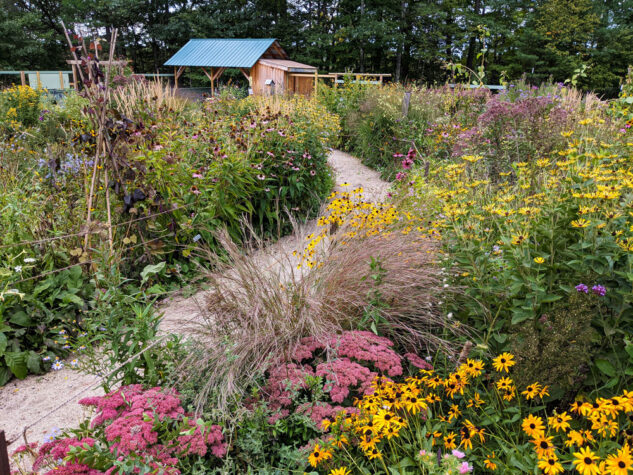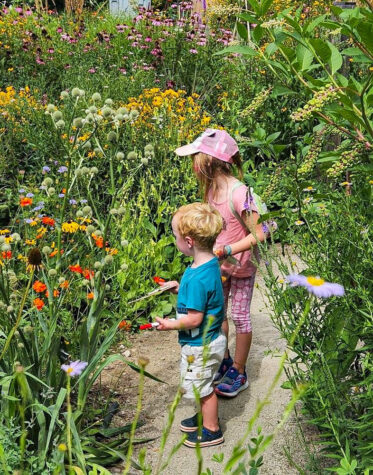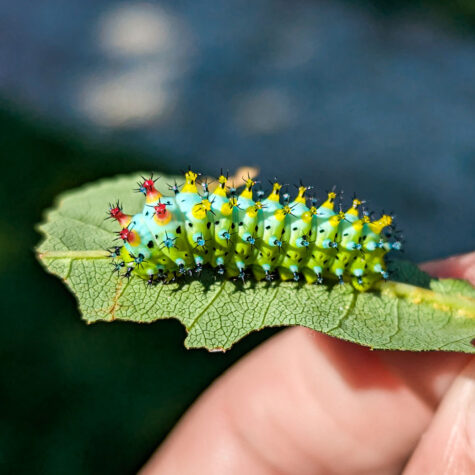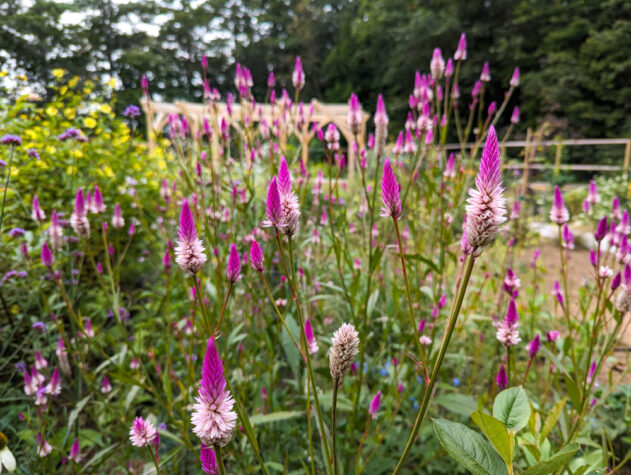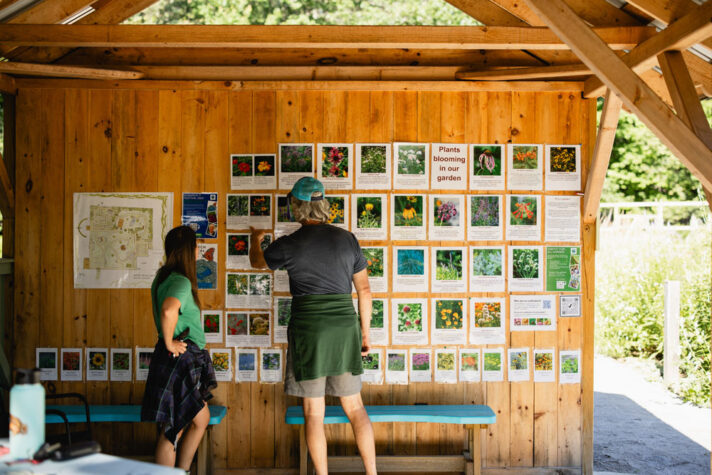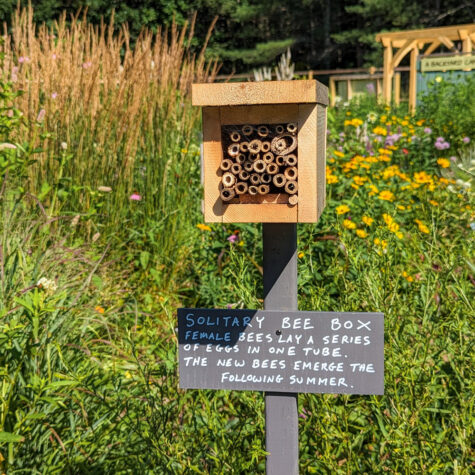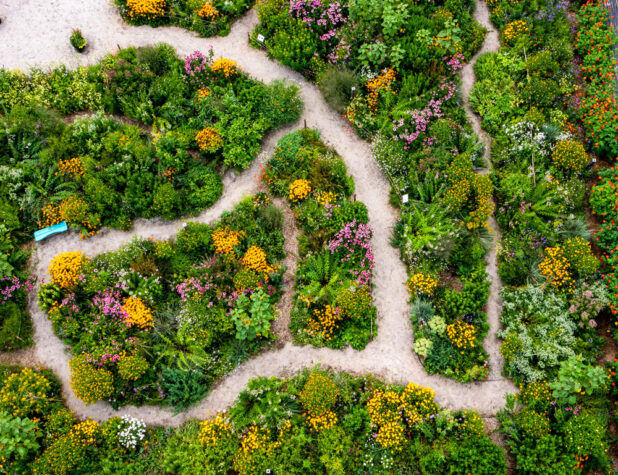Planting with Purpose at the Mahoosuc Land Trust’s Habitat for All Garden
Director of Development Barbara Murphy shares tips for creating pollinator-friendly spaces—and why they’re important
What inspired the creation of the Habitat For All Garden at Valentine Farm?
The goal for the Habitat For All Garden and educational initiative is to provide opportunities for everyone to connect with nearby nature. In construct and inspiration, it has four main pillars. The first is habitat for birds and pollinators: there are sections of the garden that are built for birds, and other areas that are densely planted for insects. It envelops visitors in a riot of color and texture—you can hardly see the ground. The next pillar is food production, which is an amazing access point to appreciating nature. Caring about your food really means caring about how it’s produced. The third pillar is sanctuary, which is especially important because we all need respite and downtime. We’ve designed spaces within the garden where visitors can sit and read or meditate, and where we encourage people to just be. The final pillar is exploration and discovery, and that corner of the garden is designed for kids and families. There are lots of hand-painted signs and prompting questions that get children to touch, smell, create, climb, and question. It’s a brilliant addition to the garden.
What are the benefits of a pollinator garden?
Insects support all life—everything that we need to eat, wear, or enjoy is somehow connected to insects—but they’re in trouble across the globe. If you simply provide some flowers with nectar and pollen, the pollinators will come, and you’ll be rewarded. It’s an incredibly easy entryway into having a close encounter with nature, even if all you have is a single plant in a pot on your stoop.
What are the first steps you recommend for establishing a pollinator-friendly garden?
After visiting the Habitat For All Garden for inspiration, I’d suggest picking up some books or doing some research online. Select a full-sun site if possible, because the flowers people are most familiar with do best in full sun. Work with a local grower who can tell you how their plants were grown and what chemicals they may have used on them. If you’re planting a small garden, buy four or five different types of plants, and then numerous ones of each so that insects can feed efficiently (they like clumps versus several different kinds). Try to choose things that bloom at different times from June to September instead of having everything happen all at once. My own philosophy is that the longer you garden, the better you garden, so give it some time and you really can’t go wrong.
What are some common mistakes people make when trying to create pollinator gardens, and how can they be avoided?
I encourage people to plant closer than the package or directions may instruct, because it provides a dense habitat that will attract more life. Also, many of our ornamental plants don’t need overly rich soils—once established, most of them are going to grow without needing much. Last, when you have a diverse garden, you attract many new insects that are also pollinators. Before you squash any new insect, make certain it’s not beneficial for the garden!
Visit Valentine Farm and the Habitat For All Garden from dawn to dusk through November 15 at 162 North Road in Bethel.
